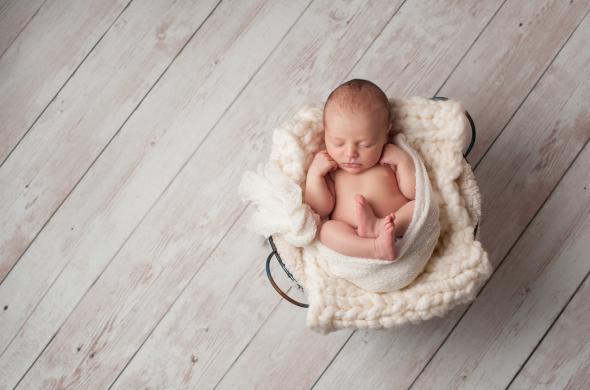In middle-ages Rome, the walls of convents had “foundling wheels” where new mothers could leave their unwanted babies. In present-day South Korea, the pastor Jong-rak Lee has created a “drop box” where mothers can place their infants, triggering a bell that alerts Lee or his wife to retrieve the child. Similarly, Germany has “adoption hatches” where mothers can leave their infants in a box that locks after closure and immediately sends a notification to the hospital where the box is located.
In America, too, Safe Haven laws, which operate in all 50 states, have legalized dropping off infants at specific locations. Yet infants are still found abandoned—and often dead—every year. Some mothers will leave their newborns at the steps of churches, hospitals, or firehouses registered as Safe Haven drop-off locations, where the babies often go for hours outdoors without being noticed.
Taking inspiration from more successful programs around the world, Monica Kelsey—once an abandoned infant herself—has created Safe Haven Baby Boxes in Indiana. These boxes, similar to the Safe Haven Baby Drawers currently operational in Arizona, are outfitted with heating and cooling features and alert 911 immediately after a baby has been placed in the box; the box locks after the infant is placed inside it, and the baby will be recovered within three to five minutes. Kelsey tells Slate that she envisions Safe Haven Baby Boxes in all 50 states within the next five years—Ohio and Michigan have already signed on. Donations to the Safe Haven 501(c)3 have poured in from around the world; in Indiana, the Knights of Columbus have pledged to fund 100 baby boxes around the state, at a cost of about $2,000 per box.
Despite the proven benefits and the widespread support, Baby Boxes are getting a good deal of trouble from Indiana’s Department of Child Services (DCS) and Department of Health (DOH). DCS Director Mary Beth Bonaventura said in a letter to Kelsey’s lawyer that anyone who leaves their infant in one of these boxes could trigger “DCS investigation and action.”
Ultimately, the disagreement is a legal one. Indiana State Health Commissioner Jerome Adams wrote in an email to Kelsey, “Nothing in state law allows the use of baby boxes as an extension of Indiana’s Safe Haven law, and the ISDH does not have inspection or oversight power over baby boxes or explicit authority to control their fabrication or installation.” These boxes were not approved because they found that “there were no specifications or functional requirements that could be created that would ensure the safety and security of children placed in a baby box and our recommendation was that the ISDH could not and should not produce standards or endorse baby boxes.”
But as Kelsey’s lawyer, James Bopp Jr,, pointed out in his correspondence with Adams, “Safe Haven has studied other states that have successfully implemented Safe Haven baby incubators. Arizona has developed the Safe Haven drawer that allows parents to abandon a child under Arizona’s Safe Haven Law by placing the child in the drawer attached to a hospital.”
The argument seems to center around the line in Indiana’s existing safe haven statute entitled “Emergency Custody of Certain Abandoned Children,” saying that “an emergency medical services provider shall, without a court order, take custody of a child.” Kelsey and her legal team do not believe that “an emergency medical services provider” needs to be a person; they view the box as an extension of the safe haven legislation. “When an emergency medical services provider arrives at the scene of the Baby Box,” Bopp says, “that person ‘take[s] custody of the child.’” The DCS and DOH disagree, believing instead that it is illegal to abandon a baby under safe-haven statute unless it is into the arms of a human safe-haven provider.
Given Indiana’s recent, extreme anti-abortion push under Gov. Mike Pence, Safe Haven Baby Boxes seem like a no-brainer for anyone hoping to steer women with unwanted pregnancies toward abortion alternatives. Instead, the state seems bogged down in syntactical hair-splitting of legislation that could save lives.
